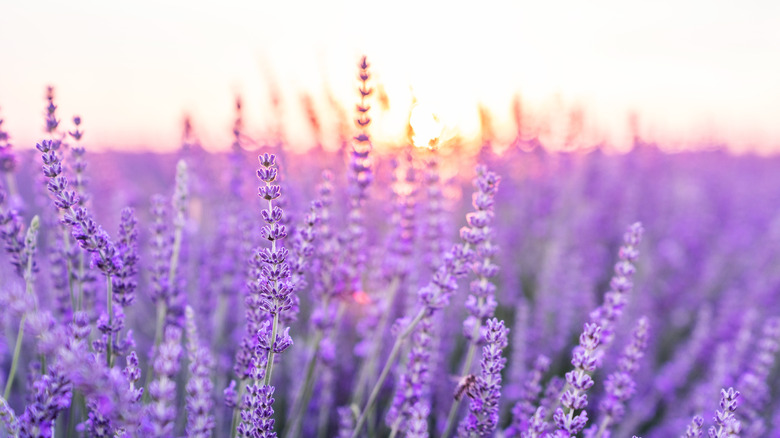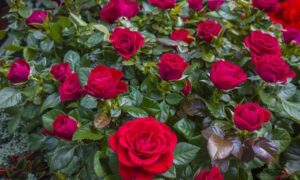
The beauty of botanical diversity enriches our lives with a myriad of colors, fragrances, and textures. Amidst this botanical tapestry, two plants stand out for their captivating hues and delightful scents: lilac and lavender. While often confused due to their similar-sounding names and aromatic profiles, entails distinct botanical characteristics, cultivation requirements, and diverse applications. Understanding the differences between these two plants enhances our appreciation for their unique qualities and facilitates their proper cultivation and utilization.
I. Introduction
Definition of Lilac and Lavender Lilac and lavender, though both esteemed for their aromatic blooms, belong to different botanical families and exhibit distinct traits. Differentiating between these two plants is essential for gardening enthusiasts and those seeking to explore their various uses and applications.
Importance of distinguishing between the two Despite their superficial similarities, lilac and lavender possess unique attributes that influence their cultivation, fragrance, and applications. Clearing up confusion between these botanical wonders fosters a deeper understanding of their individual characteristics and maximizes their potential benefits.
Overview of the differences explored in the article This article delves into the botanical characteristics, cultivation requirements, and diverse uses of lilac and lavender, elucidating the nuances that set them apart and celebrating their inherent beauty and versatility.
II. Botanical Characteristics
Lilac (Syringa vulgaris) Lilac, scientifically known as Syringa vulgaris, is a deciduous shrub renowned for its clusters of fragrant flowers. These shrubs typically reach heights of 8 to 15 feet and boast heart-shaped leaves. Lilac blooms range in color from pale pink to deep purple and emit a sweet, intoxicating fragrance that fills the air in springtime. Native to southeastern Europe and Asia, lilacs thrive in temperate climates and are cherished for their ornamental value.
Lavender (Lavandula spp.) Lavender, belonging to the genus Lavandula, encompasses a diverse group of aromatic herbs characterized by slender stems, narrow leaves, and vibrant purple flowers. Lavender species vary in size, with some forming compact mounds while others grow into sprawling bushes. Native to the Mediterranean region, lavender thrives in sunny, well-drained soils and is prized for its calming fragrance and culinary and medicinal properties.
III. Cultivation and Care
Lilac Cultivating lilacs requires well-drained soil and ample sunlight to thrive. These hardy shrubs benefit from regular pruning to maintain their shape and promote flowering. Common pests and diseases that may afflict lilacs include aphids, powdery mildew, and lilac borers, necessitating vigilant monitoring and appropriate pest management strategies.
Lavender Lavender thrives in dry, sandy soils and full sunlight, making it an ideal choice for gardens with hot, arid climates. Proper pruning helps to prevent woody growth and encourage prolific flowering. While lavender is relatively pest-resistant, it may succumb to root rot if planted in poorly drained soil, emphasizing the importance of providing optimal growing conditions.
IV. Uses and Applications
Lilac Lilacs are primarily cultivated for their ornamental value, adorning gardens and landscapes with their colorful blooms and intoxicating fragrance. In addition to their aesthetic appeal, lilacs hold symbolic significance in various cultures, representing love, remembrance, and youthful innocence. The flowers are also used in perfumery and aromatherapy, imparting their sweet scent to soaps, lotions, and candles.
Lavender Lavender boasts a multitude of uses beyond its ornamental beauty. In the culinary realm, lavender lends its floral flavor to an array of dishes, from baked goods to savory sauces. Medicinally, lavender exhibits calming and anti-inflammatory properties, making it a popular ingredient in teas, tinctures, and essential oils. Additionally, lavender’s aromatic profile enhances the ambiance of living spaces and promotes relaxation in aromatherapy and skincare products.
V. Conclusion
Summary of key differences between lilac and lavender While lilac and lavender share a penchant for aromatic blooms, they diverge in botanical characteristics, cultivation requirements, and applications. Lilacs enchant with their showy clusters of fragrant flowers, while lavender captivates with its slender stems and versatile uses.
Appreciation for the unique qualities of each plant By embracing the distinct qualities of lilac and lavender, gardeners and enthusiasts can cultivate vibrant landscapes and explore the myriad culinary, medicinal, and aromatic possibilities these plants offer.
Encouragement for further exploration and cultivation As we navigate the vast world of botanical wonders, let us celebrate the diversity of flora and embrace the unique charms of lilac and lavender. Whether adorning gardens, enhancing culinary creations, or promoting wellness, these botanical treasures enrich our lives and inspire a deeper connection with nature.


